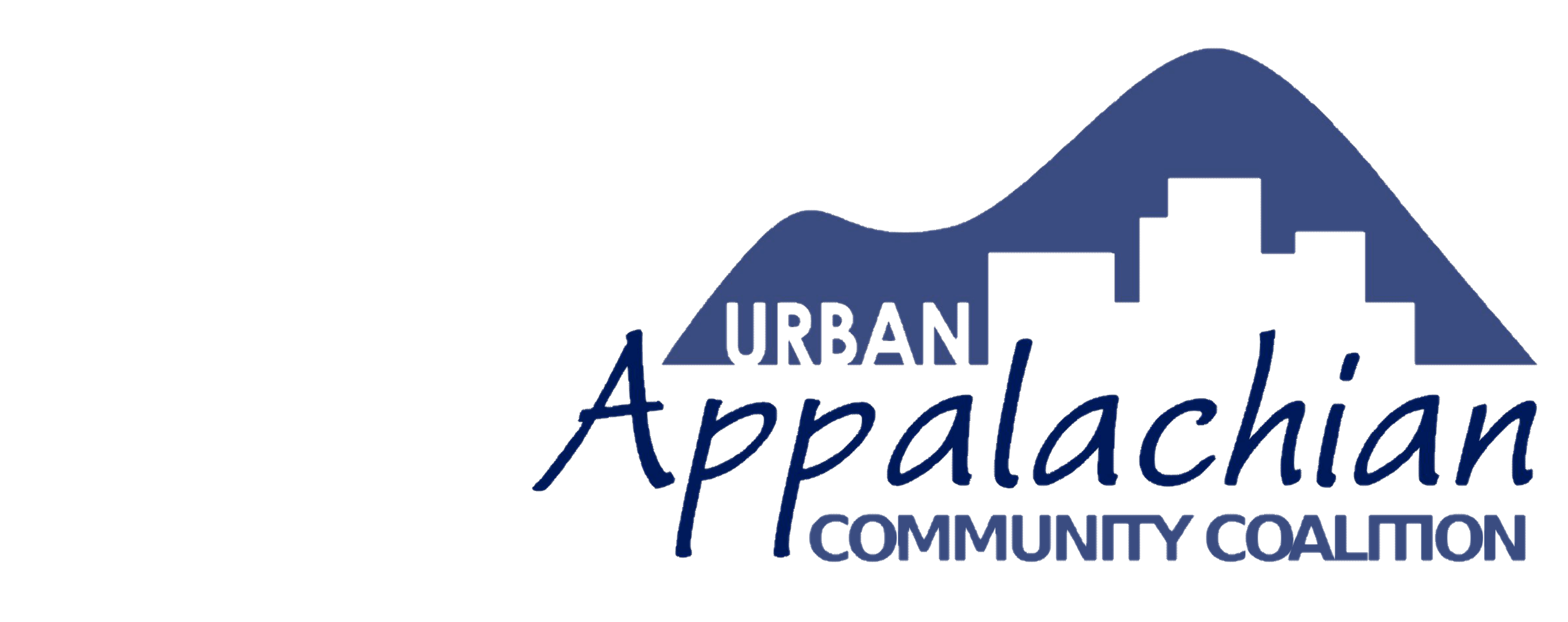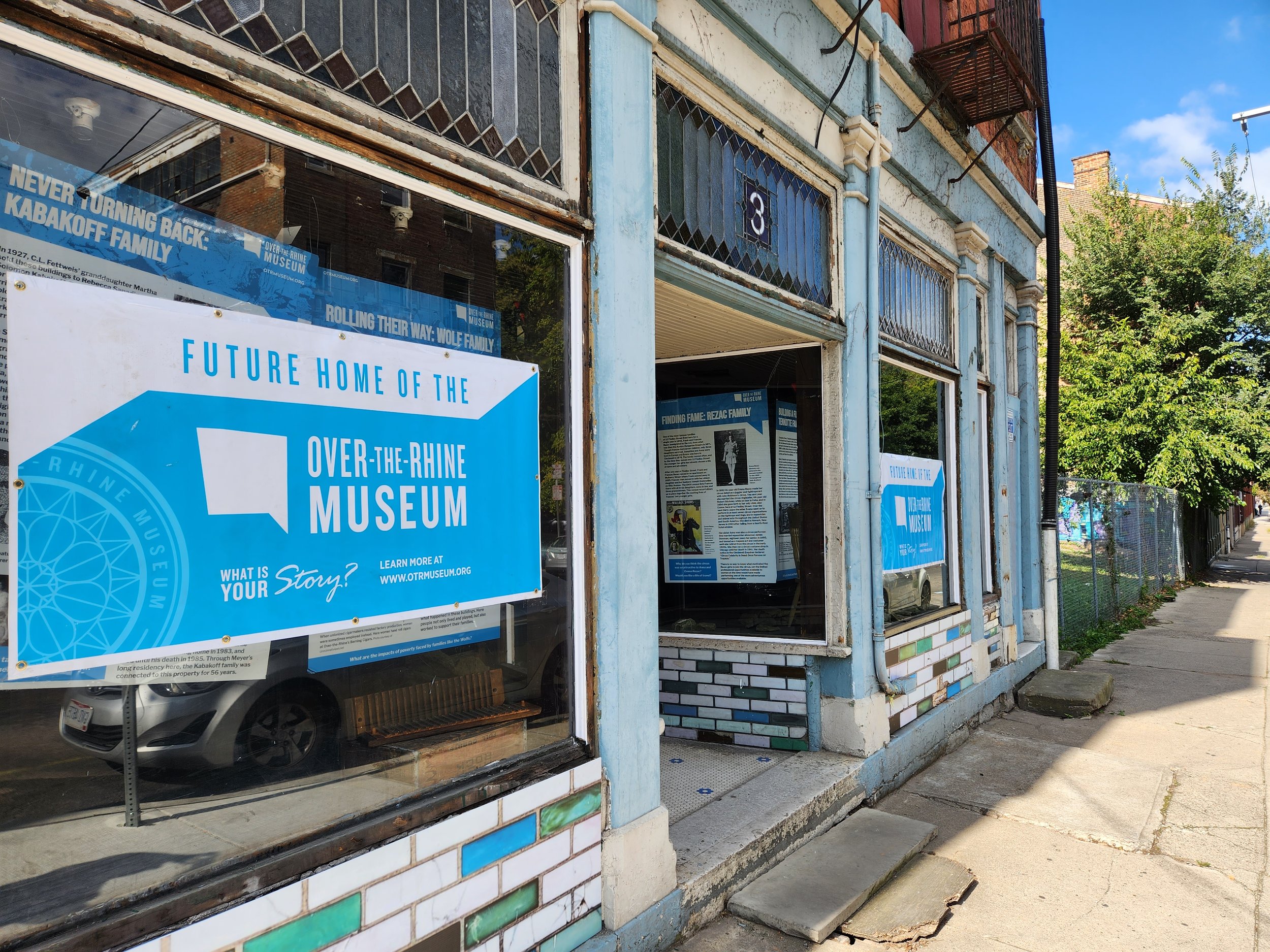By Mike Templeton
The Over-the-Rhine Museum has put out a call for stories & artifacts to help shape “In These Hills” – A New Exhibition on Urban Appalachian Life in Over-the-Rhine. This exhibition will focus on the lives of the Appalachian migrants who settled and lived in Over-the-Rhine. Younger people and those who are new to both the museum and the neighborhood itself are often surprised to learn that prior to roughly the late 1970s, Over-the Rhine was a huge center of urban Appalachian life. Indeed, the precursors to the Urban Appalachian Community Coalition were centered in Over-the-Rhine in things such as the Main Street Bible Center and the Appalachian Identity Center, but also in places where people met, ate, lived, drank, danced—in short, the neighborhood itself. In previous posts, we featured the centrality of places like Tucker’s Restaurant and the Tucker family as emblematic of urban Appalachian life in Over-the-Rhine. This is one of many articles that centered on the neighborhood as a hub of urban Appalachian life and culture. It is therefore truly exciting to see that the Over-the-Rhine Museum intends to present a curated exhibit that will teach visitors to the museum about the importance of Appalachian migrants to the neighborhood and the growth of Cincinnati.
I spoke with the Over-the-Rhine Museum’s Donna Harris, Director of Museum Administration, who explained that they are working with a curator right now to begin sorting through artifacts and stories for the exhibition. From the earliest German immigrants to the more recent tenants, the museum building at 3 West McMicken, built in the 1860s, has been home to every group of people who called Over-the-Rhine. Harris told me they have been focused “all the various kinds of people who lived there as they are simultaneously restoring the building.” Now they are focusing on Appalachians. Harris explained, “we have set our historical frame of reference to the period from about World War I to the 1960s as this accounts for the bulk of what we now refer to as the Great Migration of migrants from the southern Appalachian region.” This is a pretty good correlative for much of our research and advocacy throughout the years.
The history of Over-the-Rhine simply cannot be written or told properly without a lengthy chapter, if not several, on the presence and activities of Appalachian migrants in the neighborhood. People involved with this exhibition have been in contact with many folks either directly involved with UACC or who are key players in the work of UACC. Donna Harris said told me that people from the museum and the exhibition curator, Deborah Weiner, Ph.D., have spoken to Core member Michael Maloney for assistance in developing this exhibition. Michael Henson, a long-time UACC associate has also offered insights to staff at the museum. As for his thoughts on the exhibition, Michael Maloney told me: “My efforts as part of research and advocacy in Over-the-Rhine relate to my concern about recognition and inclusion. I want Cincinnati to know that in much of the 20th century Appalachian people in all of our diversity were one of the major groups in Over the Rhine and other neighborhoods throughout the area and made a new world here. We want that world to be recognized and included in the recording and display of that culture and history.” The Over-the-Rhine Museum has focused their resources and attention on making certain the story of Appalachian migrants in Cincinnati is grounded in the best possible historical sources.
The curator of “In These Hills” Deborah Weiner, whose work is focused on museum curation and historical research, has published historical studies on Appalachian life and culture, among many other things. Dr. Weiner brings tremendous expertise in curating these kinds of exhibitions. Donna Harris explained although this exhibition is small, it will fit into the windows of the building while they continue renovations, it will be a primary focus of the museum’s attention. The size of the exhibition should in no way be seen as diminishing the power of what is on display. Harris said, “we eventually want to focus an entire room on one Appalachian migrant family, the Smithers family about which we have a great deal of information. Until then, we are carrying on with exhibitions with the space we have available.”
At this time, the Over-the-Rhine Museum is looking for items and stories that will help tell the story of “In These Hills” using first-hand accounts and actual artifacts from urban Appalachians who perhaps lived this historical period. Contact information is provided below. In addition to the exhibition, the museum is planning a lecture on September 24 that will accompany some of what appears in the exhibition. This is still in the planning stage.
“In These Hills” will be a featured exhibition at Over-the-Rhine Museum. It will tell the story of Appalachian migrants in Over-the-Rhine, the ways these people transformed the neighborhood and Cincinnati, and the individual stories of the people who lived here. This exhibition has the promise of offering some cross-pollination with the Urban Appalachian Community Coalition’s Kith and Kin: Appalachians and the Making of Cincinnati, which collects and archives first person accounts of Appalachian migrants and their descendants, including those who made Over-the-Rhine their home. Pauletta Hansel, project director of Kith and Kin, says, “I am excited that the museum will include this focus on our community which has been such an important part of Other-the-Rhine’s history.”
The exhibition will open in fall 2025 and highlight the rich contributions of Appalachian migrants to Cincinnati’s urban landscape. If you have items or memories to share, email the Over-the-Rhine Museum at [email protected].
More information on the Over-the-Rhine Museum can be found at this link: www.otrmuseum.org.
Michael Templeton is a writer, and independent scholar. He is the author of The Chief of Birds: A Memoir published with Erratum Press and Impossible to Believe, published by Iff Books. He is also the author of Collected Apoems, forthcoming from LJMcD Communications and the awaiting of awaiting: a novella, with Nut Hole Publishing. Check out his profile in UACC’s Cultural Directory. He has published numerous articles and essays on contemporary culture and works of creative non-fiction as well as experimental works and poetry. He lives in West Milton, Ohio with his wife who is an artist.


I’m glad to see this topic coming. I plan to researching further an Appalachian family I knew in the 60’s in OTR, when I lived there. Should I submit to the [email protected]? I have photos. Thank you.
Hi, Bonnie! Yes, you can email [email protected] to submit information and photos. Thanks!